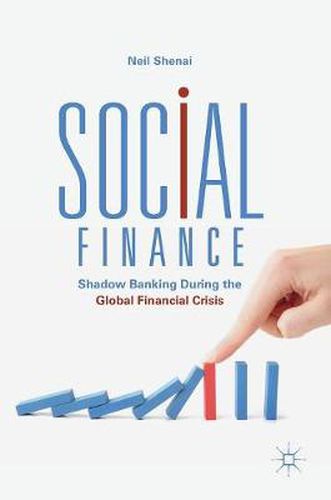Readings Newsletter
Become a Readings Member to make your shopping experience even easier.
Sign in or sign up for free!
You’re not far away from qualifying for FREE standard shipping within Australia
You’ve qualified for FREE standard shipping within Australia
The cart is loading…






This title is printed to order. This book may have been self-published. If so, we cannot guarantee the quality of the content. In the main most books will have gone through the editing process however some may not. We therefore suggest that you be aware of this before ordering this book. If in doubt check either the author or publisher’s details as we are unable to accept any returns unless they are faulty. Please contact us if you have any questions.
How do market participants construct stable markets? Why do crises that seem inevitable after-the-fact routinely take market participants by surprise? What forces trigger financial panics, and why does uncertainty lead to market volatility? How do economic elites respond to financial distress, and why are some regulatory interventions more effective than others? Social Finance: Shadow Banking during the Global Financial Crisis answers these questions by presenting a new, economic conventions-based model of financial crises. This model emerges from a theoretical synthesis of several intellectual traditions, including Keynesian epistemology, Hyman Minsky’s asset market theory, economic sociology, and international relations theory. Social Finance uses this new paradigm to explain instability in the global shadow banking system during the global financial crisis. And it presents the results of interviews with some of the world’s leading investors - who saw over $2 trillion in annual order flows and managed over $160 billion in assets - to provide first-hand accounts of markets in crisis. Written in accessible prose, Social Finance will appeal to a broad audience of academics, policymakers, and practitioners interested in understanding the drivers of financial stability in the twenty-first century.
$9.00 standard shipping within Australia
FREE standard shipping within Australia for orders over $100.00
Express & International shipping calculated at checkout
This title is printed to order. This book may have been self-published. If so, we cannot guarantee the quality of the content. In the main most books will have gone through the editing process however some may not. We therefore suggest that you be aware of this before ordering this book. If in doubt check either the author or publisher’s details as we are unable to accept any returns unless they are faulty. Please contact us if you have any questions.
How do market participants construct stable markets? Why do crises that seem inevitable after-the-fact routinely take market participants by surprise? What forces trigger financial panics, and why does uncertainty lead to market volatility? How do economic elites respond to financial distress, and why are some regulatory interventions more effective than others? Social Finance: Shadow Banking during the Global Financial Crisis answers these questions by presenting a new, economic conventions-based model of financial crises. This model emerges from a theoretical synthesis of several intellectual traditions, including Keynesian epistemology, Hyman Minsky’s asset market theory, economic sociology, and international relations theory. Social Finance uses this new paradigm to explain instability in the global shadow banking system during the global financial crisis. And it presents the results of interviews with some of the world’s leading investors - who saw over $2 trillion in annual order flows and managed over $160 billion in assets - to provide first-hand accounts of markets in crisis. Written in accessible prose, Social Finance will appeal to a broad audience of academics, policymakers, and practitioners interested in understanding the drivers of financial stability in the twenty-first century.